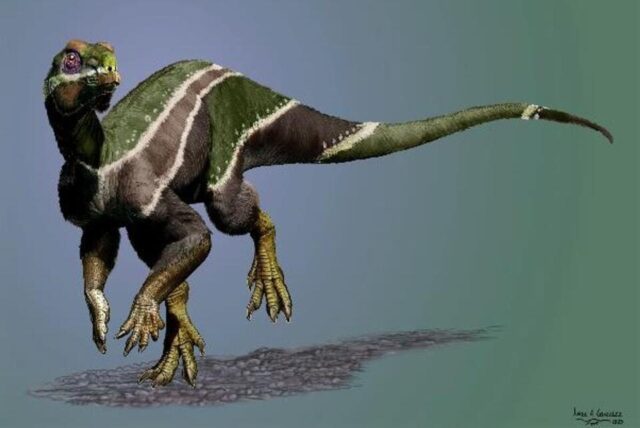A South African sedimentologist was part of an international team that discovered a new dinosaur with strong teeth and jaws to chew through tough plant material about 100 million years ago in the mountains of Utah.
CAPE TOWN – Sedimentologist Ryan Tucker from Stellenbosch University’s Department of Earth Sciences was part of an international team that discovered a new dinosaur with strong teeth and jaws to chew through tough plant material about 100 million years ago in the mountains of Utah.
The team of researchers recovered most of the juvenile dinosaur’s skeleton that existed during the mid-Cretaceous, approximately 99 million years ago – including its skull, vertebrae and limbs from Utah’s Cedar Mountain Formation, but they say the dino’s most striking feature is its powerful jaw for plant eating.
The new dino was named Iani smithi after the two-faced Roman god of change, Janus, who symbolised transitions. Iani smithi was an early ornithopod, a group of dinosaurs that gave rise to the more commonly known duckbill dinosaurs.
A statement on the discovery by North Carolina State University explains the new dino was the face of a changing planet as it may have been a species’ “last gasp” during a period when Earth’s warming climate forced massive changes to global dinosaur populations.
Lindsay Zano, from North Carolina State University and head of paleontology at the North Carolina Museum of Natural Sciences, said: “Iani may be the last surviving member of a lineage of dinosaurs that once thrived here in North America but were eventually supplanted by duckbill dinosaurs. Iani was alive during this transition – so this dinosaur really does symbolise a changing planet.”
Tucker had the role of establishing the age of emplacement into the rock record for this specific specimen, as well as reconstructing the environment in which it lived.
“I have been working in the Mussentuchit Member of the Cedar Mountain Formation for nearly a decade, attempting to understand climatic change as it is preserved in the rock record. In the case of Iani smithi, for example, much of the sedimentary rock that preserved it indicates a transitional environment, largely in a backshore tidal flat ecosystem.
“In other words, floodwaters that would reach the coastal margin would bring in fine muds and clays that would settle out and become modified into soils. This would provide the sediment needed to preserve Iani and other organisms living at the same time,” he said.
Tucker is also attempting to provide a time frame for when these species lived and based on his research it is estimated Iani smithi was around about 99.6 million years ago.
The research article is titled “An early-diverging iguanodontian (Dinosauria: Rhabdodontomorpha) from the Late Cretaceous of North America” and was published in PLOS ONE, supported by the National Science Foundation. Tucker and Zanno co-authored the article along with Terry Gates, Haviv Avrahami and Peter Makovicky.
Zanno said: “Finding Iani was a streak of luck. We knew something like it lived in this ecosystem because teeth had been collected here and there, but we weren’t expecting to stumble upon such a beautiful skeleton, especially from this time in Earth’s history. Having a nearly complete skull was invaluable for piecing the story together.”








